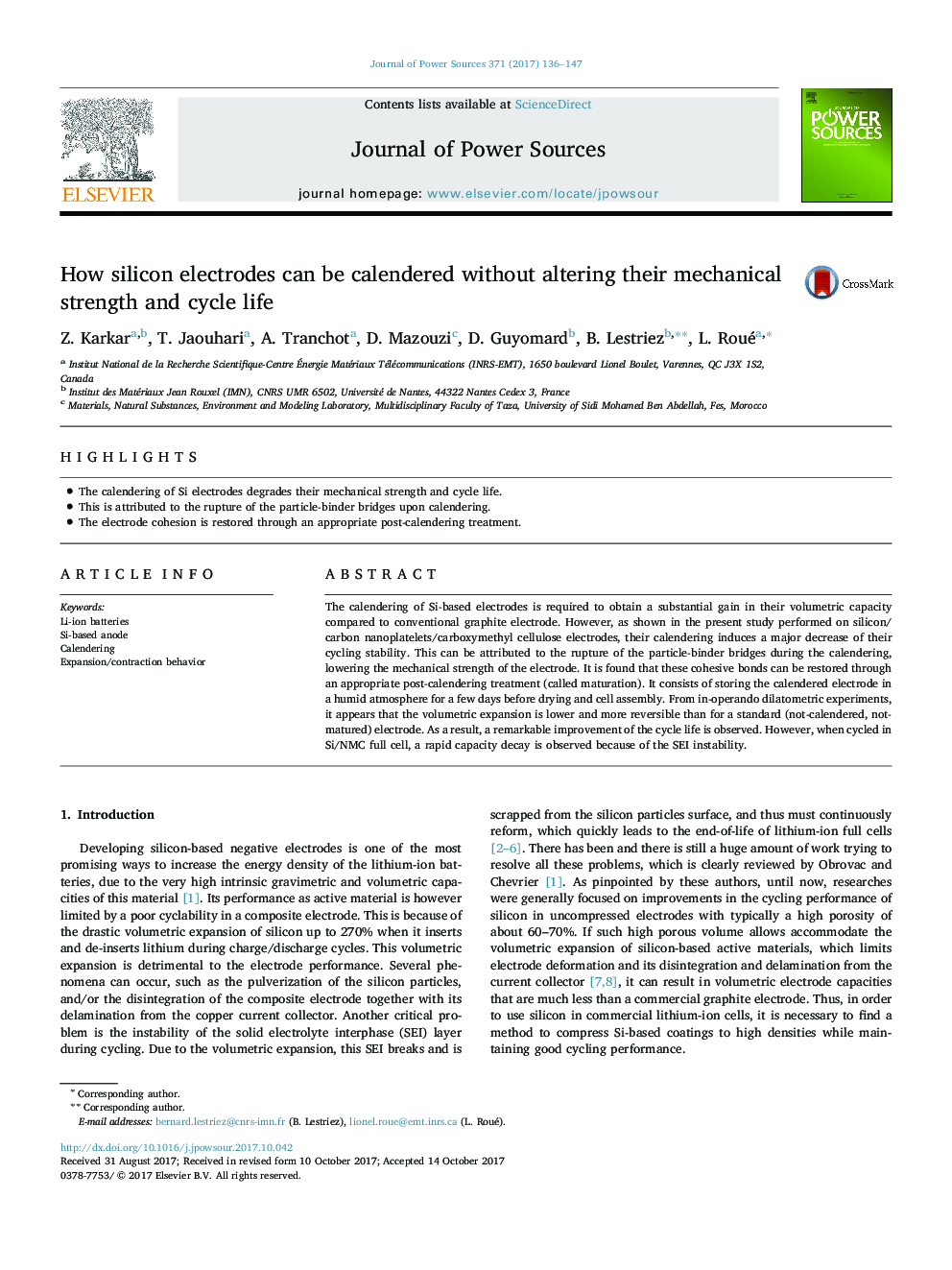| Article ID | Journal | Published Year | Pages | File Type |
|---|---|---|---|---|
| 7726490 | Journal of Power Sources | 2017 | 12 Pages |
Abstract
The calendering of Si-based electrodes is required to obtain a substantial gain in their volumetric capacity compared to conventional graphite electrode. However, as shown in the present study performed on silicon/carbon nanoplatelets/carboxymethyl cellulose electrodes, their calendering induces a major decrease of their cycling stability. This can be attributed to the rupture of the particle-binder bridges during the calendering, lowering the mechanical strength of the electrode. It is found that these cohesive bonds can be restored through an appropriate post-calendering treatment (called maturation). It consists of storing the calendered electrode in a humid atmosphere for a few days before drying and cell assembly. From in-operando dilatometric experiments, it appears that the volumetric expansion is lower and more reversible than for a standard (not-calendered, not-matured) electrode. As a result, a remarkable improvement of the cycle life is observed. However, when cycled in Si/NMC full cell, a rapid capacity decay is observed because of the SEI instability.
Related Topics
Physical Sciences and Engineering
Chemistry
Electrochemistry
Authors
Z. Karkar, T. Jaouhari, A. Tranchot, D. Mazouzi, D. Guyomard, B. Lestriez, L. Roué,
